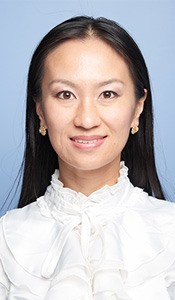Feasibility Study of a Deep Learning-Based Model Trained On Adults for Auto-Segmentation of Head-And-Neck OARs in Pediatric CT Images
Z Shen1*, A Olch2, N Bai3, K Wong2, E Chang1, W Yang1, (1) University of Southern California, Los Angeles, CA, (2) Children's Hospital of LA, Los Angeles, CA, (3) DeepVoxel Inc., Riverside, CA
Presentations
PO-GePV-T-92 (Sunday, 7/10/2022) [Eastern Time (GMT-4)]
ePoster Forums
Purpose: An attention U-Net (Uₐ-Net) was previously developed for automatic organ-at-risk (OAR) segmentation on adult CTs. The network achieved an average Dice similarity coefficient (DSC) of 80.4% and an average 95th-percentile Hausdorff distance (95%HD) of 6.21 mm during development. Twenty adult patients from a separate database were included as independent testing. The model yielded an average DSC of 72.7% and an average 95%HD of 6.69 mm, demonstrating some clinical potential in adults. In the current study, we aim to further assess the feasibility of the model to auto-segment head-and-neck (HN) OARs for pediatric patients.
Methods: We ran these adult structure models on the planning CTs from 77 pediatric patients. 15 OARs were auto-segmented by Uₐ-Net, including eyes, lenses, mandible, optic chiasm, optic nerves, oral cavity, parotids, pituitary, submandibular glands, and thyroid. DSC and 95%HD were calculated to evaluate the quality of auto-segmentation. The patients were divided into three age groups: 0-3 (N=17), 4-12 (N=28), and 13-18 (N=32) to see whether the adult model performed differently on toddlers vs. kids vs. teenagers.
Results: Uₐ-Net delineated all HN OARs under 2 minutes for each patient. Based on all 77 patients, Uₐ-Net achieved an average DSC of 59.6% (range: 31.5% for optic chiasm to 82.6% for right eye) and an average 95%HD of 9.11 mm (range: 4.26 mm for left eye to 18.10 mm for oral cavity). There were no significant differences in the DSC and 95%HD among the three age groups for most OARs based on two-sided unpaired t-test.
Conclusion: The inferior DSC and 95%HD in pediatric patients indicate the need to adapt the adult model using larger pediatric datasets. Unexpectedly, the adult Uₐ-Net auto-segmentation model achieved similar performance across all age groups of children. Further study on adaptive learning accounting for differential structural growth rates as patients age is warranted.
Funding Support, Disclosures, and Conflict of Interest: NB is an employee of DeepVoxel Inc. during the conduct of the study. All other authors have no relevant conflict of interest to disclose.
Keywords
Taxonomy
Contact Email



